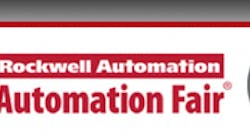Traditionally, electrical power distribution and automation control systems have been supplied as independent systems. This two-system approach introduces complexity and costs throughout the life of the plant.
“The electrical group and the controls group do separate engineering, designs, purchases and installations,” said Ted Mroz, EPC business manager, North America, Rockwell Automation. “Separate systems require multiple vendor relationships, producing duplicate visualization, archiving and reporting platforms.”
[sidebar id =2]
The two systems take separate plans for factory acceptance testing and commissioning, often on different timelines. “By putting them together, you can use one supplier/vendor/partner to pre-assemble and prewire, and put it at the site,” Mroz said. “You don’t have to wait, then put it together and test it on-site, along with everything else that’s going on in a construction environment. That takes fewer hours, and shortens the schedule.”
Rockwell Automation’s relationships with multiple vendors allow users to choose electrical components best suited to their requirements, connected by unmodified Ethernet to ease integration. Typical savings from this “packaged systems” approach alone are in the range of 15%. The benefits of such an integrated approach to automation and electrification was among the innovations discussed at the Engineering, Procurement and Construction Industry Forum at this week’s Automation Fair event in Houston.
The power of digitalization
In many cases, power system communication technologies have not kept pace with automation systems. Plants often maintain substation automation systems with intelligent electrical devices (IEDs) operating on a variety of networks. The electrical supervisory control and data acquisition (eSCADA) system has limited visibility to the process control system.
For process control, some plants use proprietary networks that rely on individual, hardwired connections for motor control devices. Others have adopted a second digital network to ease motor control integration, but face configuration and response time challenges, and limited access to data. Still others have improved control system integration and communication with an Ethernet infrastructure, but no digital access to substation data.
“With a unified network and unified system, now you can connect your electrical components to the control system or DCS, reducing material and labor costs. By going from analog to digital, you have fewer cables and trays, saving materials and labor,” Mroz said.
Unified systems can improve workplace safety with remote monitoring, and reduce unplanned downtime with real-time access to operating conditions, faults, alarms and events. And the digital solution can save more than 25% in design and implementation costs.
Savings add up
By replacing independent eSCADA and process control systems with a unified, fully digital system based on unmodified Ethernet, Rockwell Automation’s Integrated Power & Automation offers 70% to 90% savings in integration costs, Mroz said.
Using EtherNet/IP, Allen-Bradley Intelligent Motor Control devices communicate and work as an integral part of the process control system. At the same time, critical substation equipment communicates with IEDs over Ethernet using the IEC-61850 standard.
Substation data maps directly to the control environment for seamless communication between the IEDs and the control platform. The result is a digitally-enabled, unified system that provides integrated substation visibility through the same system that runs the rest of the plant, offering:
• Less complexity and duplication with one network, visualization, archiving and reporting platform;
• Access to synchronized, time-stamped data from a single source;
• Better load management and energy management;
• Real-time monitoring of electrical and process systems from anywhere;
• Up to 90% lower integration costs as part of a Rockwell Automation Logix control system;
• Up to 70% lower integration costs when integrated as a power skid with third-party control platforms; and,
• Faster and easier system modification and expansion.
“You have a simpler system, with better access to the equipment since you don’t need to add twisted pairs for every functionality,” said Mroz. The platform is ready to connect to the enterprise, IT and OT world. “You’ve put in the plumbing for optimization, maintenance, access to the equipment. All the data is available—it’s not another capital project down the road when you want more.”




